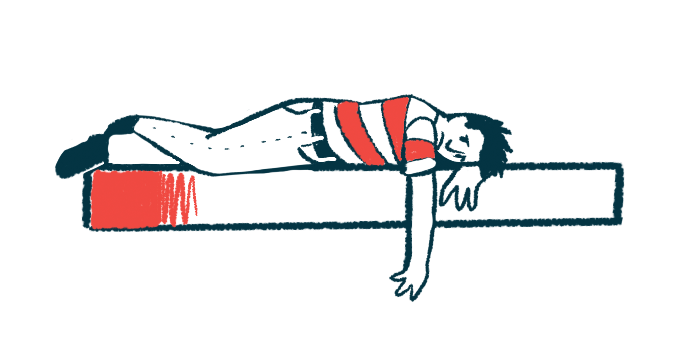Higher Risks of Depression, Anxiety for CAD Patients in 1st US Study
Patients 60% more likely to get treatment than healthy people
Written by |

Individuals with cold agglutinin disease (CAD) face greater risks of mental health problems, with patients 60% more likely than healthy people to receive medical attention for anxiety or depression, according to a new U.S. study.
The data referred to a combined risk of requiring either a hospital visit for an anxiety- or depression-related event, a prescription for antidepressants, or use of psychotherapy.
“This study provides the first insight into the association of CAD with anxiety and depression,” the researchers wrote. “Patients with CAD may experience a greater burden of disease that potentially has a broader impact on their overall mental health, physical health, and quality of life.”
The study, “Medically-attended anxiety and depression is increased among newly diagnosed patients with cold agglutinin disease: Analysis of an integrated claim-clinical cohort in the United States,” was published in the journal PLOS One. It was funded by Sanofi, which markets Enjaymo, the first and only treatment approved for CAD in the U.S. and in Europe.
Risks of anxiety, depression higher in CAD
Mental health problems, including anxiety and depression, are common among people living with chronic diseases as they face the stress of a new diagnosis and the uncertainties it may bring over time.
But for patients with rare disorders, such issues are often underexplored, in part due to the difficulties of obtaining a large enough sample size for a study to draw conclusions.
“Patients with anemia are more likely to develop anxiety and depression that affect their quality of life, but there are no studies to date that investigate this in patients with CAD,” the researchers wrote.
CAD is a rare autoimmune disease marked by self-reactive antibodies that attack the body’s red blood cells at cold temperatures, leading to anemia, pain, fatigue and other symptoms.
To address this knowledge gap, researchers in the U.S. and at Sanofi analyzed data from CAD patients and healthy people held in the de-identified Optum Integrated Claims-Clinical dataset. The data was collected between January 2006 and June 2016.
The Optum dataset links electronic medical records with insurance claims data for about 55 million people in the U.S., and includes information related to medications, diagnoses, procedures, and other clinical information.
From these records, the team identified 384 CAD patients, 25 and older, without a history of anxiety or depression at the time of their CAD diagnosis. Up to 10 healthy people were matched to each CAD patient in terms of age, sex, race, geographical region, time in the Optum health plan, and season and year of entry into Optum. This yielded a comparator group of 2,789 people.
More than 70% of people included in either group were age 65 or older, with a mean age of 70 years in the CAD group and 69.6 years in the comparator group. Most were women (57.6% in CAD and 54.4% in the comparator group) and Caucasian (85.2% and 84.7%).
Rates of medically attended anxiety or depression were assessed based on three different findings in medical records: use of anxiety/depression medications, psychotherapy, or a hospital visit for an anxiety- or depression-related event.
Ultimately, the team was looking at the risk for four distinct outcomes: hospitalization alone, medication and/or therapy use alone, hospitalization with medication or therapy, and the overall risk of experiencing any of these outcomes.
Similar to previously reported preliminary findings, results showed that CAD patients had about a 1.6 times higher risk of any of these outcomes than matched healthy people, reflecting about a 60% higher likelihood of having medically-attended anxiety or depression.
CAD patients also were 80% more likely to be prescribed antidepressants or psychotherapy and had a twofold higher risk of being hospitalized for anxiety or depression and given associated medication or therapy relative to healthy people.
Moreover, on average, people with CAD experienced any hospitalization, medication use, or psychotherapy nearly 11 months sooner than the control group.
Those with CAD were 70% more likely than comparators to use prescription medications for anxiety and depression when looking at participants with prescriptions for only those uses.
On average, patients started using these medications 15 months after their CAD diagnosis. The most commonly used medications among CAD patients included benzodiazepines (76%), antipsychotics (24%) and selective serotonin uptake inhibitors (10%).
Findings were generally similar for a subgroup of patients with primary CAD, in which the underlying cause of the disease is unknown and other illness that could drive its development haven’t been identified.
That subgroup was at the highest risk for medication or therapy use without hospitalization — a 2.7 times greater risk than their matched comparator group.
Overall, “we note a significant difference in manifestation of anxiety and depression in patients with CAD,” the researchers wrote, but cautioned that no cause-and-effect relationship between CAD and the mental health conditions “could be drawn.”
“The potential mechanisms responsible for the concurrent anxiety and depression with chronic diseases are complex and multifaceted,” the team wrote, noting it’s an issue that “certainly warrants further investigation.”





